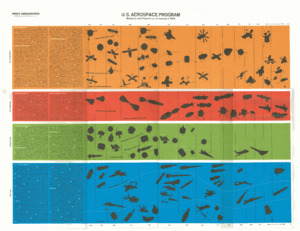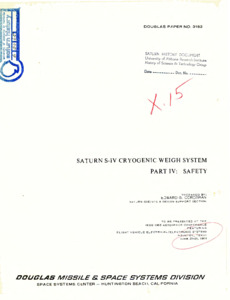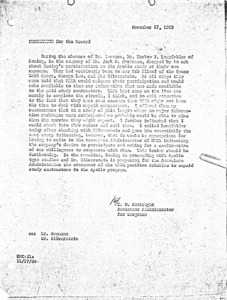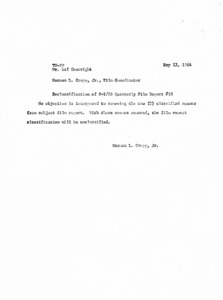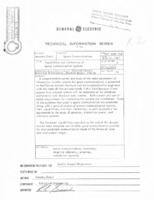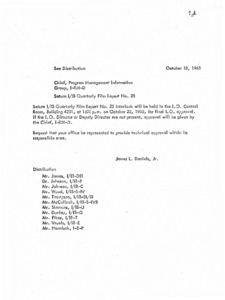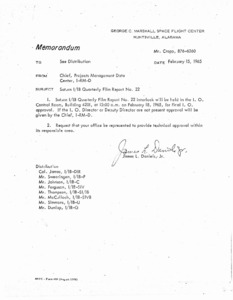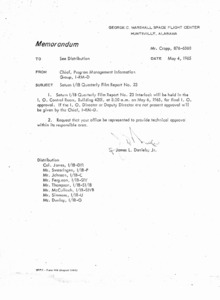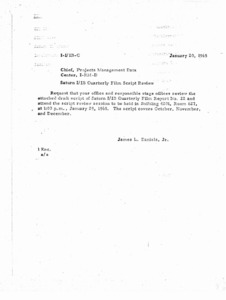
Browse Items (970 total)
Sort by:
-
"U.S. Aerospace Program: missions and projects as of January 1, 1966."
The document contains four charts labeled "Investigation", "Exploration", "Utilization", and "Control". Each chart is organized chronologically, contains drawings of U.S. Aerospace Program Projects, and incudes written descriptions of each project. -
"Saturn S-IV cryogenic weigh system. Part IV : safety."
During cryogenic weigh system operation, hydrogen when combined with oxygen can create an unsafe condition. Therefore the concentration of the residual oxygen and hydrogen from leaks in the cryogenic weigh environmental bags must be known at all times during the cryogenic weigh. Hydrogen and oxygen detectors will provide the optimum method for maintaining safe conditions. Hydrogen properties and safe mixtures are reviewed. The method selected to analyze the oxygen content is discussed. The selection, development, and testing of a hydrogen detector system is examined. -
"Memorandum for the record, from E. M. Cortright, Assistant Administrator for Programs."
Poor photocopy. Memorandum informing that members of the Boeing company are coming by for a study of their own. -
"Memorandum to Mr. Hal Seawright, TS-PP, from Norman L. Cropp, Jr., Film Coordinator. Declassification of S-I/IB quarterly film report #18."
Memorandum declassifying "Quarterly Film Report #18." -
"Capabilities and Limitations of Space Communication Systems."
The paper "Capabilities and Limitations of Space Communication Systems" is part of a General Electric Technical Information Series prepared for the Apollo Support Department. The abstract states "A survey and study of the basic parameters of information transfer systems for space communications is presented in this paper, to familiarize systems checkout and on communication engineers with the state-of-the-art and trends in this field. Both current and anticipated requirements for space communication systems are briefly considered. Some of the problems that exist in space communication are presented, along with a general review of current communication systems, their capabilities, and limitations as well as possible improvements in the areas of spacecraft directional antennas, ground stations and antennas, spacecraft transmitter power, and telemetry systems. It is concluded that the increased capabilities expected by the end of this decade should make adequate and reliable space communication possible for most predicted communication needs of future space missions at lunar and near-planet ranges." -
"Saturn I/IB quarterly film report no. 25."
Memo gives dates and times of the interlock for final I.O. approval. -
"Saturn I/IB quarterly film report no. 24."
Gives dates and time of interlock for final I.O. approval. -
"Memorandum : Saturn I/IB quarterly film report no. 22."
Memorandum includes date and time of interlock for final I.O. approval. -
"Memorandum : Saturn I/IB quarterly film report no. 23."
Memorandum includes date and time for interlock and final I.O. approval.; Archive copy is a photocopy. -
"Memorandum : Saturn I/IB quarterly film script review."
Memorandum pertains to the review draft script.
